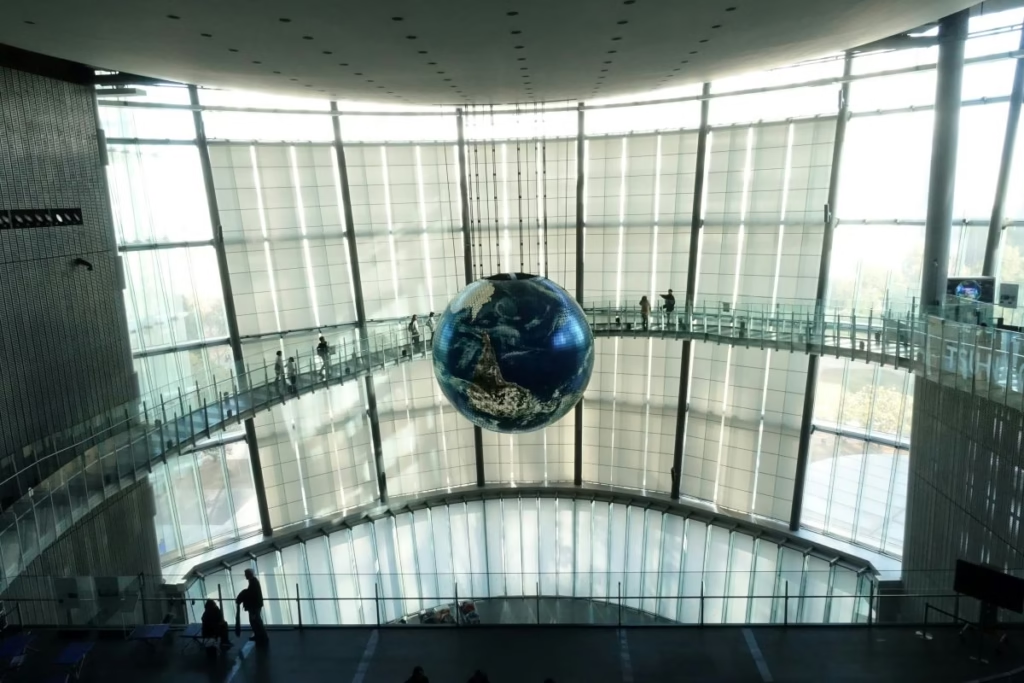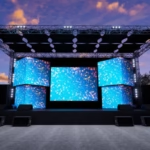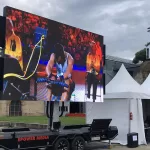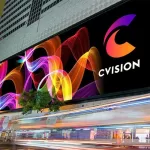As immersive media experiences become a competitive differentiator, spherical LED displays are gaining significant attention across commercial, entertainment, and public spaces. Their ability to create seamless 360-degree visuals transforms static environments into interactive hubs, driving engagement and brand recognition. However, achieving true visual excellence requires more than just innovative industrial design. The synergy between pixel pitch optimization en advanced driving solutions defines the actual performance of high-resolution spherical LED modules.
By analyzing evolving market needs and technological advancements, we explore how precision engineering enables brands and venues to maximize the impact of immersive displays.
The Rising Demand for Spherical LED Displays
Global adoption of spherical LED displays has surged in sectors such as retail, museums, airports, and exhibition centers. Their distinctive geometry allows content creators to leverage fully panoramic storytelling, which traditional flat LED walls cannot achieve. Consumers increasingly seek engaging experiences, and brands recognize the strategic role of advanced display formats in shaping perceptions.
The demand is further amplified by the following industry drivers:
Immersive Branding Needs: Modern marketing favors emotional storytelling, making spherical displays a natural choice.
Smart Cities and Landmarks: Integration with architectural environments enables next-generation public information systems.
Entertainment Evolution: Concerts, stadiums, and gaming arenas use spherical LED installations to amplify crowd engagement.
Despite the rising demand, realizing full visual potential requires addressing two key engineering challenges: pixel pitch selection en driving technology.
Understanding Pixel Pitch in Spherical LED Displays
Pixel pitch, defined as the distance between two LED centers, determines both image clarity and visual impact. Unlike flat LED panels, spherical LED displays introduce additional complexity since pixel density must adapt to curved geometries while maintaining uniform resolution.
1. Impact of Pixel Pitch on Visual Quality
A smaller pixel pitch offers sharper detail but increases system costs and processing requirements. Conversely, larger pixel pitches deliver efficiency but compromise close-range readability. The optimal choice depends on:
Viewing Distance: Indoor museum spheres require finer pitches, often below 2.5mm, for detailed storytelling.
Content Type: High-definition video or data-driven infographics benefit from smaller pitches, while ambient light shows allow larger pitches.
Environmental Factors: Outdoor installations often prioritize brightness and durability over ultra-fine resolution.
Through extensive testing, D-King’s engineering team identifies balanced configurations, enabling precise pixel pitch alignment that enhances both image sharpness and energy efficiency.
Driving Solutions for Spherical LED Displays
While pixel pitch defines resolution, driving technology dictates the smoothness, brightness, and synchronization of content. As the spherical form factor introduces multi-axis curvature, achieving uniform luminance across all viewing angles becomes challenging.
1. Constant-Current vs. Constant-Voltage Drivers
Modern spherical LED displays favor constant-current drivers due to their superior brightness stability and reduced risk of color shift. This is critical in applications where uniform visuals across 360 degrees are non-negotiable.
2. Adaptive Refresh Rates
High-end applications require refresh rates exceeding 3840Hz to eliminate flicker during camera capture. D-King’s modular solutions integrate scalable driver architectures that optimize refresh rates dynamically, ensuring fluid playback even under demanding multimedia scenarios.
3. HDR and Color Calibration
To achieve natural gradients, D-King applies proprietary HDR mapping algorithms combined with per-module calibration. This technology corrects inconsistencies in color output caused by curved alignment, producing vivid imagery without distortion.
Engineering Challenges and Solutions
Creating seamless spherical LED display installations involves overcoming significant technical hurdles:
Geometric Consistency: Each modular panel must maintain uniform alignment without visible seams.
Thermal Management: High-density diodes generate concentrated heat, requiring efficient dissipation strategies to ensure durability.
Content Mapping: Spherical projections demand specialized content workflows to avoid stretching or misalignment.
D-King leverages advanced CAD-driven module design, precision CNC machining, and lightweight composite materials to simplify integration. Moreover, our proprietary software ecosystem ensures accurate spherical content mapping, reducing deployment timelines and maintenance overhead.
Market Opportunities for Spherical LED Displays
The global LED display market is projected to exceed USD 15 billion by 2030, with spherical formats expected to outpace flat-panel growth. Emerging opportunities include:
Retail Flagship Experiences: Immersive storefronts drive foot traffic and consumer interaction.
Airports and Transit Hubs: Dynamic wayfinding combined with advertising unlocks dual monetization channels.
Event Production: Interactive LED spheres enhance storytelling in concerts and exhibitions.
For brands aiming to differentiate in competitive markets, spherical LED displays represent both a technological upgrade and a marketing advantage.
Konklusie
The convergence of pixel pitch optimization en advanced driving solutions defines the next era of spherical LED displays. As demand grows for immersive, data-rich environments, brands and public venues must invest in display technologies that deliver seamless performance at scale.
D-Koning remains committed to advancing modular LED engineering, ensuring our partners lead the transition from static signage to dynamic, multidimensional engagement. In an increasingly visual economy, high-resolution spherical LED installations will set new standards for experience-driven innovation.





